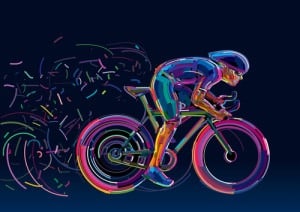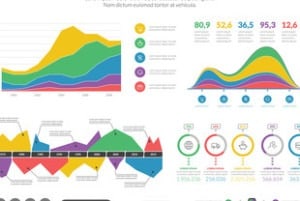
How Team USA cycling used real-time analytics from IBM to measure and improve athlete performance.
Name of Organization: USA Cycling
Industry: Sports
Location: Colorado Springs, Colorado, USA
Business Opportunity or Challenge Encountered:
USA Cycling, the organization dedicated to advancing US cycling teams in the Olympics and other international events, was seeking ways to get an edge over more well-funded competitors in events such as Women’s Team Pursuit. While many national teams are supported by their governments, USA Cycling relies on private donations. This is where analytics comes into the picture — coaches realized that smarter analytics of riders’ performance could provide a competitive advantage without breaking the organization’s budget.
As documented in a recent case study published by IBM, the challenge was to measure real-time performance in Team Pursuit track cycling events, which is held indoors in velodromes. Without the variations in wind or track conditions found outdoors, the ability to monitor, track and adjust rider performance is relatively straightforward.
“The single most important factor in winning a race is the power that the riders are able to exert on the pedals,” according to Andy Sparks, director of track programs for USA Cycling, as quoted in the case study. “The bikes we use have a power meter on the crank that measures the power generated in watts.”
Team Pursuit involves four cyclists, with one in the lead and the other three drafting behind. The challenge occurs when riders switch places, which disrupts the “slipstream” and slows the group. Even a fraction-of-a-second slowing can cost races in this highly competitive sport.
Gathering and measuring cycling analytics data from bicyclists’ sensors was a slow-going process that took up to an hour per cyclist.
At the end of a training session, the coach “had to plug the head unit of each bike into his PC, download the data, manually slice it into half-second intervals, match those intervals to the events that took place during the session — for example, when each rider was pulling, versus when they were exchanging or pursuing — and then calculate a variety of key metrics,” according to the case study. This meant not having performance data and cycling analytics ready until the next training day.

USA Cycling organizers recognized that real-time analytics would help them achieve this goal. The Women’s Team Pursuit organization began working with IBM jStart to configure a real-time data flow to deliver instant analytics on rider performance to coaches’ mobile dashboards. Data is generated from Android smartphones in riders’ pockets, and transmitted to IBM Watson’s Internet of Things platform for analysis. jStart is an IBM team focused on providing intelligent business solutions built on the latest emerging technologies.
Analytics are delivered through a summary dashboard that presents metrics such as W-prime depletion, which is a measurement of how much anaerobic muscle capacity a rider has use and how long it takes to regenerate.
In the next phase of the project, the jStart team will be incorporating IBM Analytics for Apache Spark to calculate metrics while cyclists are still in motion, and provide smart glasses to provide a personalized head-up display of whichever key metrics are most useful for each of the riders.
Measurable/Quantifiable and “Soft” Benefits from This Initiative:
With the cycling analytics data generated through the real-time link, and displayed on a mobile dashboard, both coaches and riders can access details on performance during training sessions, with ensuing feedback.
“The ability to get hold of the data immediately after the training session has finished has completely changed my relationship with the team,” according to Neal Henderson, a high performance consultant with USA Cycling, as quoted in the case study “Because we can all see the data instantly, it’s much easier to identify problems, make adjustments, and reinforce winning behaviors that they can take into the next session. The solution helps us show our riders exactly how effectively they’re working.”
USA Cycling organizers credit the system with playing a role in helping to finish with a gold medal at the London World Championships. Having immediate feedback data available helps cyclists focus on their performance. It also relieves stress. With instant analytics, coaches can provide “riders a quick debrief after the first race, advise them on tactics for the next one, and then just let them relax and recover,” says Henderson.
(Source: IBM)





























